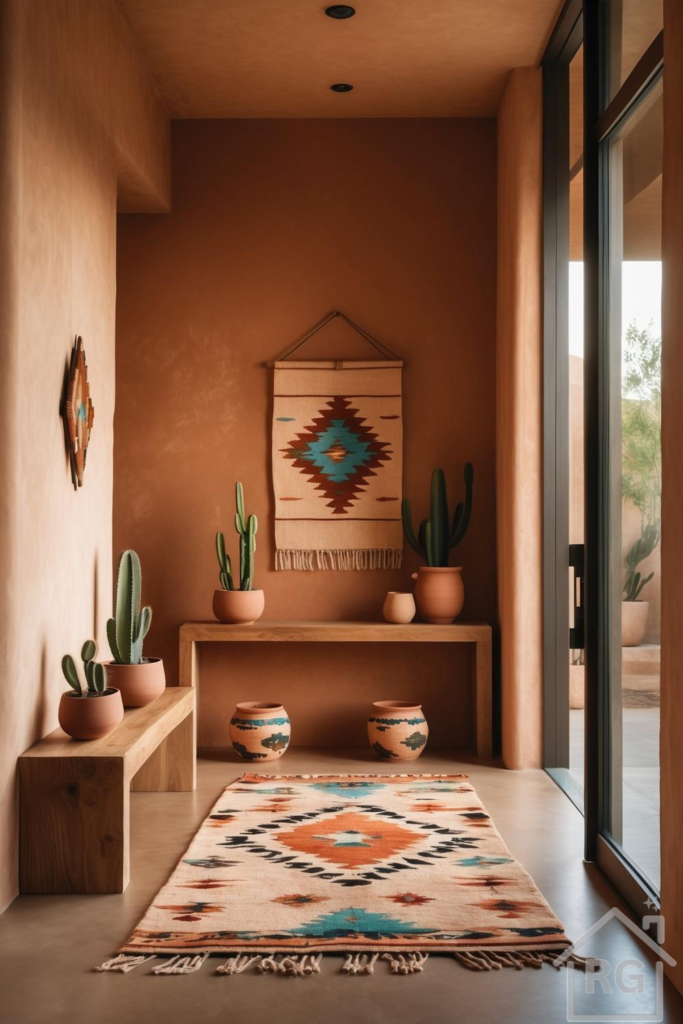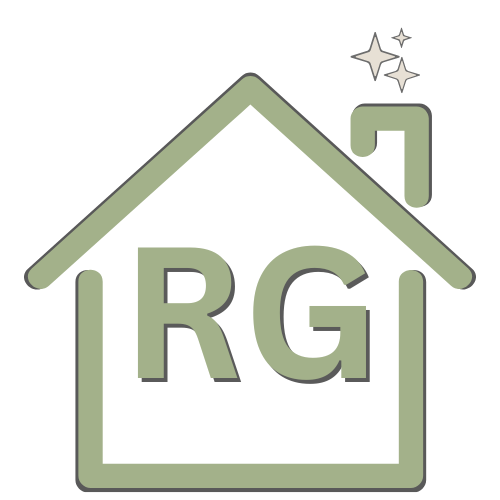
Step into a realm of warmth, texture, and tranquility. The Southwestern design aesthetic, deeply rooted in the landscapes of the American Southwest, offers a unique blend of rustic charm, natural beauty, and cultural richness.
Creating an entryway inspired by this style means crafting a space that is not only visually stunning but also deeply calming and welcoming. It’s about harnessing the power of earthy tones, natural materials, and iconic motifs to create a seamless transition from the outside world into the sanctuary of your home.
This guide will walk you through the essential elements and principles needed to design your own serene Southwestern entryway, drawing inspiration from spaces that masterfully blend tradition with modern sensibilities.
1. The Soul of the Southwest: The Color Palette
The foundation of any Southwestern interior is its color palette, drawn directly from the desert environment. Think of sun-baked earth, vast canyons, and vibrant sunsets.
- Terracotta and Earth Tones: These are the heart of the palette. Warm shades of terracotta, clay, rust, ochre, and sienna dominate walls and key decor pieces. These colors evoke a sense of grounding, warmth, and connection to the land. Consider using techniques like limewash or plaster for wall finishes to add subtle texture and depth, enhancing the organic feel.
- Sandy Beiges and Creams: To balance the richness of the earth tones, incorporate lighter neutrals like sand, beige, and cream. These colors reflect light, prevent the space from feeling too heavy, and provide a neutral backdrop for bolder elements. They often appear in textiles, lighter wood finishes, or even floor treatments.
- Accent Hues: While the base is earthy, Southwestern design often incorporates pops of vibrant color inspired by native crafts and the natural world. Turquoise and teal are classic choices, representing water and sky, often found in pottery glazes, textiles, and artwork. Muted blues, desert greens (like sage), and occasional bursts of sunset orange or deep burgundy can also be used sparingly to add visual interest. Black or charcoal grey provides essential contrast and definition, often seen in the geometric patterns of rugs and textiles or in metal accents.
2. Celebrating Nature: Materials and Textures
Texture is paramount in Southwestern design, adding depth, interest, and a tactile quality that connects the space to its natural origins. Layering various textures is key.
- Stucco and Plaster: Textured walls are characteristic. Whether authentic adobe, plaster, or a modern textured paint finish, this element adds an immediate layer of rustic authenticity.
- Natural Wood: Wood brings warmth and organic structure. Opt for woods with visible grain, like pine, oak, or reclaimed wood. Finishes should generally be natural, matte, or lightly distressed rather than high-gloss. Simple wooden benches, console tables, or even exposed ceiling beams contribute significantly.
- Terracotta and Clay: Unglazed terracotta pots are iconic. Their porous texture and earthy color are intrinsically Southwestern. Use them generously for housing plants or as standalone decorative objects. Glazed pottery with traditional patterns can introduce accent colors.
- Woven Textiles: Rugs, wall hangings, and cushion covers are essential for introducing pattern, color, and softness. Look for handwoven or loom-woven pieces made from natural fibers like wool or cotton. Geometric patterns, inspired by Navajo or other indigenous designs, are classic. Fringed edges enhance the handcrafted feel.
- Leather and Suede: Touches of leather or suede on seating (if applicable in an entryway) or as decorative accents can add another layer of natural texture.
- Stone and Concrete: Smooth concrete floors offer a modern counterpoint to rustic textures, providing durability and easy maintenance. Natural stone tiles or accents could also be incorporated.
3. Furnishing the Space: Simplicity and Function
Southwestern entryway furniture prioritizes simplicity, functionality, and natural materials.
Benches and Console Tables
These are practical additions. A simple wooden bench provides seating and a place to drop bags, while a console table offers a surface for keys, mail, and decorative displays. Clean lines often work best, letting the materials and decor shine.
Minimalism
Avoid clutter. The Southwestern style, while rich in texture, often embraces a sense of openness and space, mirroring the vast desert landscapes. Choose a few well-loved, high-quality pieces over numerous smaller items.
4. Iconic Decor: Plants, Pottery, and Patterns
The finishing touches truly define the Southwestern entryway.
Cacti and Succulents
No Southwestern space is complete without desert flora. Cacti (like Saguaro, Prickly Pear, Barrel Cactus) and various succulents thrive in bright conditions and add sculptural beauty. Group them in terracotta pots of varying sizes for maximum impact. Ensure your entryway has adequate light, or choose lower-light tolerant succulent varieties if needed.
Pottery
Beyond planters, use terracotta or ceramic vessels as decorative accents. Group them on benches, tables, or the floor. Look for pieces with interesting shapes or subtle painted details.
Textiles as Art
A striking woven wall hanging can serve as a major focal point, introducing color, pattern, and texture. Ensure it complements the rug without overwhelming the space.
Wall Art
Geometric wood carvings, metal sculptures with desert motifs (used judiciously), or framed prints of desert landscapes can enhance the theme. Keep frames simple and natural.
Mirrors
A mirror can make an entryway feel larger and brighter. Choose one with a frame made of natural wood, distressed metal, or even a simple, clean design.
5. Layout, Light, and Atmosphere
Consider how the space flows and feels.
- Clear Pathways: Ensure an unobstructed path into the home. Use rugs to define the entryway zone.
- Lighting: Maximize natural light if possible. Large windows or glass doors are ideal. Supplement with warm ambient lighting – recessed lights, or perhaps a simple pendant light with a natural shade. Use accent lighting to highlight artwork or plant groupings if desired. Aim for a warm, inviting glow, especially in the evenings.
- Creating Calm: The overall goal is a serene atmosphere. Arrange elements in a balanced way. Symmetry in the placement of decor can contribute to a calm feeling.
Achieving Your Southwestern Sanctuary
Designing a Southwestern entryway is about more than just assembling objects; it’s about capturing a feeling – one of warmth, resilience, and connection to the earth.
Start by establishing your color palette and incorporating key textures through wall finishes and flooring. Select simple, functional furniture in natural wood. Then, layer in the iconic elements: terracotta pottery, cacti, and beautifully patterned woven textiles. Pay attention to lighting and layout to create a welcoming flow.
Whether you source authentic handcrafted items or find modern interpretations, focus on natural materials and a warm, earthy palette to create an entryway that is both stylish and deeply serene – a true desert-inspired welcome to your home.
